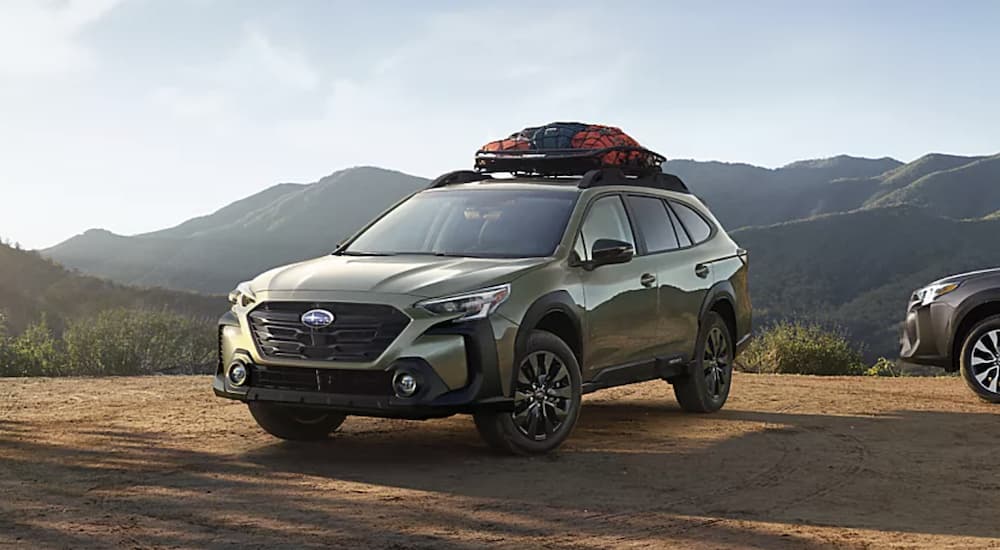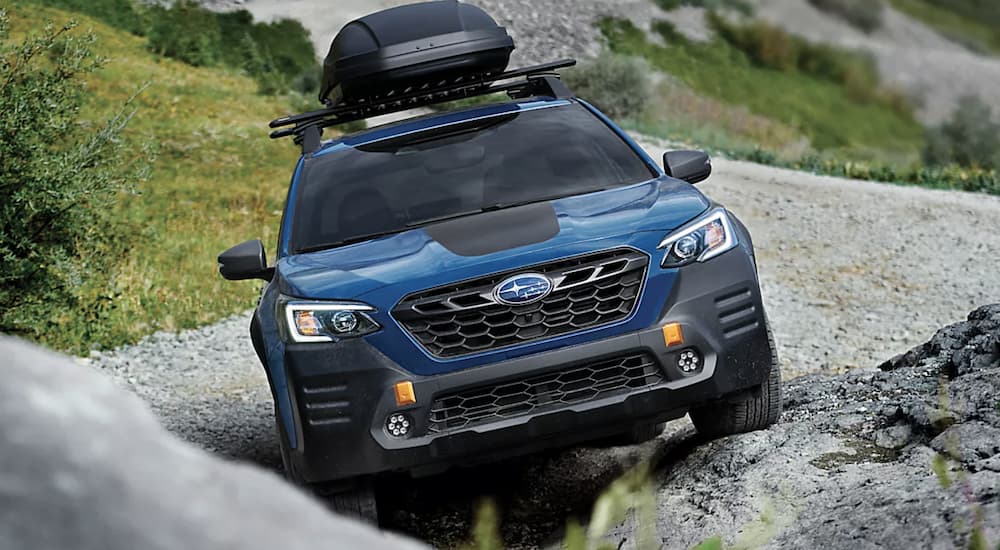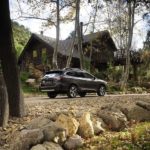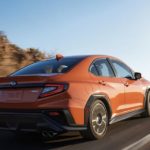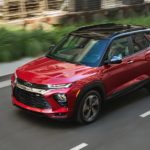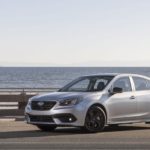Sometimes you look at a vehicle and its trim levels, and things make sense; typically, there are only a few options, and the differences between them are readily apparent. Other times, however, you look at a huge number of trims, and the longer you look, the less sense it all makes, particularly when the names don’t help differentiate them much. Whether you’re planning on checking out the 2023 Subaru Outback or you simply like to stay informed about what’s out there, this is a prime example of when too many trims can become a problem.
Looking at the Outback, you can see that it’s a fantastic midsize SUV with a lot to offer, which is why it’s so popular with many drivers. However, once you look past the surface, you’ll probably be struck by the fact that Subaru offers NINE different trim levels for the Outback. While the differences between some of them make a lot of sense, and at least one of them has a name that’s, thankfully, self-explanatory, not all of them are that simple to figure out. Let’s take a look at the Outback and each of its trim levels to see what sets them apart. Then, hopefully, we’ll understand why Subaru has decided so many are necessary.
Subaru Outback: Base
The Base starts the Outback lineup and sets the stage for everything else to come; all of the other trims build on this in one way or another. For starters, the Base comes with Subaru’s standard 2.5L BOXER 4-cylinder engine that delivers 182 hp and 176 lb-ft of torque. This engine is paired with a Continuously Variable Transmission (CVT), which you’ll find in every model, along with Subaru’s Symmetrical All-Wheel Drive (AWD), another standard on all Outbacks.
Inside the Base, Subaru has provided manually-adjustable front seats, with basic cloth upholstery and automatic climate control. Every model also comes with paddle shifters and Advanced Adaptive Cruise Control with Lane Centering, plus the Base has a 7-inch infotainment display, a four-speaker sound system, and a USB-A charging port up front. The Base also comes with Subaru’s EyeSight Driver Assist Technology, which includes an Automatic Pre-Collision Braking System and Automatic Emergency Steering.
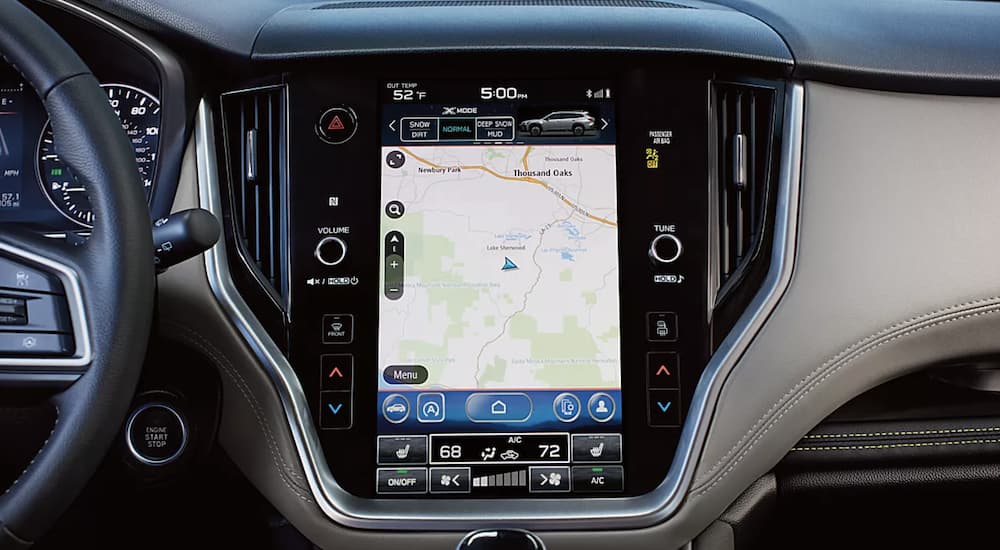
Subaru Outback: Premium
Moving up to the Premium trim, you won’t find a vast number of changes and upgrades, but some key additions make it an excellent option for many drivers. In terms of performance, it has the same engine and other features as the Base, but the Premium has numerous upgrades inside. These include a power-adjustable driver’s seat, heated front seats, and a leather-wrapped steering wheel. The Premium has some available options that drivers can’t get on the Base, like keyless access with push-button start and a hands-free power rear gate. It also features dual-zone climate control, a six-speaker sound system, and an available 11.6-inch infotainment screen with navigation.
Subaru Outback: Onyx Edition
The Onyx Edition is very similar to the Premium and has many of the same features inside and out, with only a few key differences. For example, the Base and Premium have 17-inch wheels, while the Onyx Edition has 18-inch wheels with a black finish. Another detail that sets it apart is the StarTex water-repellent upholstery, a feature not found on most other trims and one that is perfect if you often have furry passengers. It also has keyless access with push-button start and a hands-free power rear gate as standard features rather than available options. Beyond the Onyx Edition’s auto-dimming rearview mirror, its features are very close to what’s found in the Premium.
Subaru Outback: Limited
Moving up to the Limited introduces many standard features that aren’t available on the lower trims. The Limited features the same performance as the previous three, plus 18-inch black wheels with a machine finish. However, inside is where the Limited really sets itself apart: it features a 12-way power-adjustable driver’s seat and an eight-way power front-passenger seat, along with heated front and rear seats. A heated steering wheel is available in the Limited, but leather-trimmed upholstery and a two-position memory function for the driver are both standard features.
While the Limited also has an 11.6-inch infotainment display with navigation available, this is the first model with an impressive 12-speaker Harman Kardon premium sound system as standard equipment. In addition, the Limited has upgraded safety features thanks to Blind-Spot Detection with Lane Change Assist and Rear Cross-Traffic Alert. You’ll also find Reverse Automatic Braking as a standard feature.
Subaru Outback: Wilderness
The Wilderness is my favorite trim for the Outback, not only because its name thankfully makes sense but also because of its many impressive features. This is the off-road trim, hence the name, and it has a raised suspension with 9.5 inches of ground clearance that’s perfect for hitting the trail. It also features unique front and rear bumpers for better clearance, plus it has the StarTex water-repellent upholstery that’s perfect if you tend to get a bit dirty while going off-road.
The Wilderness is the first model in this lineup to feature the Outback’s available 2.4L turbocharged beast that delivers 260 hp and 277 lb-ft of torque. With this engine, the Outback can handle up to 3,500 lbs of towing; models with the standard powertrain top out at 2,700 lbs. The Wilderness adds to its capability with 17-inch wheels wrapped in all-terrain tires rather than the all-season tires that every other trim gets. It also has some unique exterior details, like black-finish folding side mirrors, and ample technology, like the six-speaker sound system. Overall, the off-road focus on this model makes it very easy to see what it offers and for drivers to figure out if it’s the right option for them.
Subaru Outback: Touring
Finally, we have the Touring, which can be considered the pinnacle trim in terms of luxury features and tech options. This model comes with the standard 2.5L engine, rather than the turbocharged powerplant in the Wilderness, and it features a power tilt and sliding glass moonroof. Inside, the Touring has fantastic features, including heated and ventilated front seats, heated rear seats, and a heated steering wheel. Nappa leather-trimmed upholstery adds luxury throughout the cabin, and technology like the smart auto-dimming rearview mirror and numerous USB ports in the front and rear add convenience and accessibility. An 11.6-inch infotainment display comes standard with navigation, along with the impressive Harman Kardon sound system and additional safety features like Reverse Automatic Braking and a DriverFocus Distraction Mitigation System.
Subaru Outback: XT Trims
If all of this was too tidy and easy to follow, Subaru has made everything more complicated by offering XT versions of three trims: the Onyx Edition, Limited, and Touring. Fortunately, this doesn’t make things too confusing. Instead, you can think of the XT versions as an upgrade that keeps a lot of the features of the original trims. For starters, they all come with the more powerful 2.4L turbocharged engine. However, you’ll find other upgrades as well, so it’s not as simple as saying they’re the same but with a better engine. For example, the standard Limited model has an available heated steering wheel, which comes standard on the Limited XT. Similarly, the Limited XT comes with navigation, an available option on the Limited.
Simplifying Your Choices
Overall, you can see there’s a lot going on in the Outback lineup, and while some of these naming conventions can keep things simple, they’re not as easy as they could be. If the XT models simply had the same features as their counterparts but with a more powerful engine, then that’d be easy, but there are other upgrades too. In general, a shopper can keep things pretty straightforward by choosing the engine they want and then picking from the available options. It would be nice if Subaru would streamline these options a bit, but until then, I’ll be here to keep breaking things down and helping you figure out what’s what.
